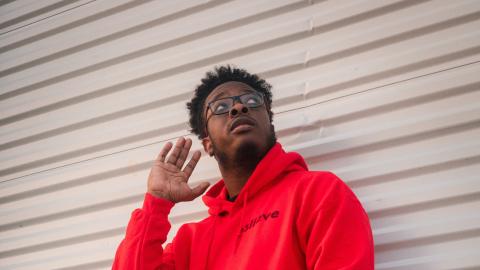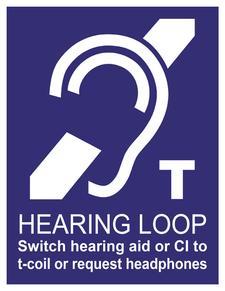
I write from Scotland, where 23 years ago I had an ear-opening experience while worshiping at the Iona Abbey. The spoken word, after reverberating off its stone walls, was an inaccessible fog to my hard-of-hearing ears. My wife, noting a hearing assistance wall sign and knowing that my new hearing aids had magnetic “T-coil” (telecoil) receptors, nudged me to activate them with a simple button push. Voila! The worship leader’s voice was suddenly crystal clear, and I was near tears.
In our United Kingdom sojourns in most years since, I have experienced this “hearing loop” technology (which transmits sound from a microphone directly to hearing aids) in many more venues: in most worship places and auditoriums with PA systems, at customer service stations (such as post-office windows and pharmacy counters), and in black taxis.
In each such location, there is no need to locate, check out, and return special equipment (because my hearing instrument is both the receiver and speaker). And unlike the hearing-aid incompatible FM hearing equipment available in many U.S. worship places, hearing loops are not only more convenient and more hygienic (they also deliver sound customized for one’s hearing needs). Finally, they are simple to use—just push a button on one’s hearing aid control. (For older users, especially, simplicity is essential; please, no smartphone interfaces.)

The good news for North Americans with hearing loss is that hearing loops are now spreading around the continent. Moreover, in many communities, including my Holland-Zeeland, MI, worship places have led the culture with installations that enable people to better hear the word. Nearly all our local churches offer hearing loops, which can also be found in our community’s auditoriums. And they now exist in some larger installations—including both concourses and all gate areas of the Grand Rapids Airport, and even the 12,200 fixed seats of Michigan State University’s basketball arena.
Across Lake Michigan, in Wisconsin—thanks to the leadership of hearing loop advocate Dr. Juliette Sterkens and others—close to 800 churches, auditoriums, and other facilities now have hearing loops. Thanks to the efforts of New York City hearing advocates, hearing loops have come to facilities both small (subway booths) and large (many Broadway theatres), and are coming to Kennedy, LaGuardia, and Newark airports. A U.S. Access Board committee has also proposed hearing aid compatible accessibility (for now, hearing loops) in all future U.S. rail and subway cars.
Google Maps is quietly adding assistive hearing loops as the one and only hearing accessibility attribute that facilities can add, with over 5,000 installations already recorded as offering hearing loops.
Thanks partly to the expressed wishes of the hearing loss community, the hearing industry now makes the needed telecoil available in most hearing aids and cochlear implants. (For those without suitably equipped hearing aids, receiver/headsets are available.) Many audio-visual firms have been trained to install quality systems that meet the international hearing loop standard, and to resolve any issues related to interference or sound spillover to adjacent looped rooms.
Compared with traditional listening systems that require checking out and wearing a generic headset, people with hearing loss greatly prefer hearing loops and are much more likely to use them. Although loop installations cost more than other hearing assistance systems (because a loop wire must be run and hidden), the cost per user is often less. One person, after first turning on his telecoil and hearing his pastor’s stunningly clear voice, observed: “The experience of actually hearing such clear sounds was thrilling and hard to describe.”
Hearing loops are truly good news for those of us whose attention wavers, especially during sermons that require effort to hear. I foresee a happier future for North Americans with hearing loss—where hearing aids and cochlear implants will have doubled functionality, by serving as wireless speakers in varied public venues including worship places, as more and more people are hearing the word.
For more information visit hearingloop.org or tinyurl.com/HearingLoopResources
Dr. David G. Myers is a longtime professor of psychology at Hope College and a member of Hope Church (RCA), both in Holland, MI.
_____________________________________________________________
Interested to learn more? Register to join us for our virtual Get in the Loop event on February 6. You'll learn more about how churches can benefit from utilizing hearing-loop technology!
Dr. Juliette Sterkens and Dr. David Myers are experts in how churches can support people living with hearing loss through hearing loop technology. In this webinar, they will explain both the benefits and best practices in utilizing hearing-loop technology. There will be time for questions as well.
CART and ASL interpretation will be provided.

Let's Discuss
We love your comments! Thank you for helping us uphold the Community Guidelines to make this an encouraging and respectful community for everyone.